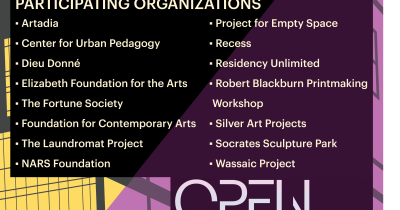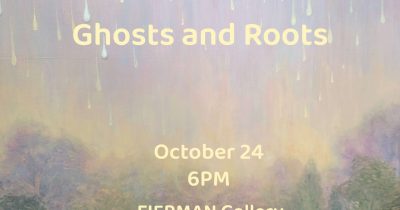Residency Unlimited (RU) is pleased to announce the finalists of the 2025 NYC-Based Artist Residency Program, an annual program dedicated to supporting NYC-based artists traditionally underrepresented in the arts.
Please join us in welcoming Ayanna Dozier, Bat-Ami Rivlin, fields harrington, and Cato Ouyang for a three-month residency from April 1 – July 2, 2025. The four artists were selected through an open call by a panel of three distinguished arts professionals who reviewed 380 applications: Jesse Bandler Firestone, Tahir Karmali, and Sara Riesman. Curated by RU Guest Curator Jesse Bandler Firestone, this year’s edition Clocking In, Clocking Out examines intricate relationships between labor, agency, and systemic structures.
Spanning performance, installation, sculpture, and ethnographic research, the selected artists zero in on the forces shaping contemporary work, from planned obsolescence, sex work and the gig economy, and corresponding narratives of mobility and confinement. During this three-month program the artists will further develop new and existing projects. The residency component, entitled Clocking In, involves meeting weekly with a variety of arts professionals to advance the artist’s professional interests through targeted networking opportunities, feedback sessions, and workshops. Clocking In culminates in Clocking Out, a group exhibition curated by Jesse Bandler Firestone. The exhibition will be on view from June 12 – July 2, 2025 at All Street Gallery.
Highlights from each artist’s application:
Ayanna Dozier’s ongoing Fear of Public Sex(ual Dissent) convenes a research group of sex workers and scholars to analyze ethnographic materials and media by sex worker grassroots organizations, bringing their insights to the public through film programming. Dozier’s work critiques the surveillance and displacement of sex workers, particularly Black femme sex workers, exposing how their marginalization signals broader societal threats to freedom and agency. Her time-based performance-films use her body in dialogue with members of the community to consider and remind audiences of sex worker histories within the landscapes of urban redevelopment, challenging the erasure imposed by modernization.
Bat-Ami Rivlin interrogates the politics of function and materiality by repurposing found objects into sculptural installations. From deflated kayaks bound by zip ties to truck tires encircling a fountain, Bat-Ami’s assemblages reveal patterns of utility that stem from the objects and spaces we occupy. By recognizing the function of these ready-made objects, Rivlin’s works point to systems of regulation, leisure, and class. The installations make visible narratives of social and economic categorization embedded within material culture. By sourcing materials locally, each work speaks to its specific environment, embodying an ecology of use and refuse.
fields harrington dissects the overlapping forces embedded in the gig economy by examining New York City’s delivery workforce alongside corresponding politics of extraction and exhaustion that plague both people and the planet. Lithium-ion batteries, which power e-bikes, depend on rare earth minerals essential to electronic devices, vehicles, and even weapons. Though these minerals are abundant worldwide, China controls about 70% of their production and 90% of their processing, according to the U.S. Geological Survey and the International Energy Agency. harrington notes that this monopoly underscores the connection between global extraction networks and extreme urban labor practices. His photographs of e-bicycles used by delivery workers further relay these machines as extensions of the workers themselves, symbolizing the upper limits of human functioning within a system of global exploitation linked through continuous extraction of time, labor, and materials. Urban infrastructures and algorithmic management dictate the rhythms of contemporary labor, which harrington incorporates into installations that employ DIY aesthetics to explore resourcefulness, precarity, and resistance.
Cato Ouyang’s ongoing project Kinds of Distance bridges historical and contemporary narratives of mobility, agency, and invisibility through a research-based, multimedia approach. Documenting their 500-mile pilgrimage along the Camino de Santiago, Cato’s work juxtaposes their own lived experiences alongside the medieval tradition of anchorites—women who walled themselves into churches as a form of chosen isolation—with the 1975 occupation of the Church of Saint-Nizier by sex workers protesting systemic violence. Through sculpture, film, and performance, Cato weaves a three-way metaphor that correlates urban water systems as sites of darkness, possibility, and movement, the contribution of sex workers who live in the underbelly of society while upholding its relational structures through invisibilized erotic labor, and the immaterial faith that illuminates the darkness of the anchorite cell.
Collectively, these projects interrogate the ways labor and agency intersect with history, materiality, the body, and public space. By centering the experiences of those who labor at society’s margins, Dozier, Bat-Ami, fields, and Ouyang challenge audiences to reconsider the structures that define work, visibility, and autonomy in contemporary life.
About the Artists:

Ayanna Dozier is a Brooklyn-based filmmaker-artist and writer working with performance, experimental film, installation, printmaking, and analog photography. Her work examines how transactional intimacy, such as sex work, redistributes care from the private sector into public and social politics of relations. She is the author of Janet Jackson’s The Velvet Rope (2020) and is currently working on a manuscript titled The Pull-to-Trigger: Women Experimental Film and Video on the Taboo during the Sex Wars.
Dozier has exhibited at institutions including BRIC (Brooklyn, NY), Microscope Gallery (New York, NY), the Block Museum (Chicago, IL), the Gantt Center (Charlotte, NC), MoCA Arlington (Arlington, VA), Hauser & Wirth (Los Angeles, CA), PLATFORM Centre (Winnipeg, MB), and The Shed (New York, NY). She has participated in residencies such as the 2022 Wave Hill Winter Workspace (Bronx, NY), the 2018-2019 Helena Rubinstein Fellowship in Critical Studies at the Whitney Independent Studies Program, and the 2024 Penumbra Workspace Residency. Her films are held in the permanent collections of the Whitney Museum of American Art and the National Museum of African American History and Culture. She is an assistant professor in Film Studies in the Department of Communication at the University of Massachusetts, Amherst.

Bat-Ami Rivlin is a New York-based sculptor, educator, and writer working with found and surplus objects. Her work has been exhibited internationally, with recent solo exhibitions including Untitled (inflatable slider) at Lo Brutto Stahl (Paris, France & Basel, Switzerland, 2024), Untitled (car, eyeballed) at Lower Cavity, (Holyoke, MA, 2024), Boat, Plastic, Tire at L21 PALMA (Palma, Mallorca, Spain, 2023), EN-SITIO at Museo de la Ciudad de Querétaro (Querétaro, Mexico, 2022), No Can Do at M 2 3 (New York, NY, 2021), Untitled (inflatable house, zip ties, blower) at A.I.R. Gallery (Brooklyn, NY, 2021) and the two-person presentation, Excess and Surplus, at Sharp Projects (Copenhagen, Denmark, 2021). Additional notable exhibitions include Grace Under Fire at The Shepherd (Detroit, MI, 2024), plus one at Ensemble (New York, NY, 2024), Simple Sabotage at Kunsthal Nord (Aalborg, Denmark, 2023), The Socrates 2023 Annual at Socrates Sculpture Park (LIC, NY), The Backend at Montclair State University Galleries (Montclair, NJ, 2023), COLAPSO at Tenerife Espacio de las Artes (Santa Cruz, Tenerife, Canaries, Spain, 2022), and whereabouts at the Hessel Museum of Art, CCS Bard (Annandale-on-Hudson, NY, 2022).
Rivlin’s work was reviewed in publications such as Artforum, BOMB Magazine, Brooklyn Rail, Flash-Art, émergent magazine, The Art Newspaper, Artnet, PIN-UP Magazine, Office Magazine, The Paris Review, Public Parking, Granta Magazine and more.
She is the recipient of the RAIR residency (2025), Sculpture Space residency (2025), Monira Foundation Artist Residency (2025), LES Printshop Fellowship (2024), 1708 Gallery Residency (2024), Lower Cavity Artist Residency (2024), Socrates Sculpture Park Annual Fellowship (2023), A.I.R. Gallery Fellowship (2020) and NARS Foundation Residency (2017) among others.
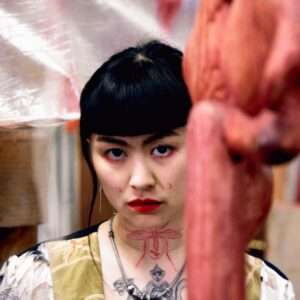
Cato Ouyang is a New York-based artist whose work engages sculpture, installation, and conceptual approaches to materiality. Ouyang has held solo exhibitions at Night Gallery (Los Angeles), No Place Gallery (Columbus, OH), Lyles & King (New York), the Knockdown Center (Queens, NY), and Make Room (Los Angeles). Their work has been included in group exhibitions at the Cantor Arts Center (Stanford, CA), the Institute of Contemporary Art at MECA&D (Portland, ME), the Aldrich Contemporary Art Museum (Ridgefield, CT), Capsule (Venice), James Fuentes Gallery (New York), Jeffrey Deitch (New York and Los Angeles), and more.
Their work has been featured in publications such as The New York Times, Artforum, Flash Art, Momus, Sculpture Magazine, Document Journal, Art Review, and Frieze. Their work is held in the collections of the Brooklyn Museum, Los Angeles County Museum of Art, High Museum (Atlanta, GA), Pérez Art Museum Miami, Nasher Sculpture Center (Dallas, TX), Columbus Museum of Art, Kadist Foundation (San Francisco), Faurschou Foundation (Copenhagen), Pond Society (Shanghai), and X Museum (Beijing). Ouyang holds an MFA from Yale University and is represented by Lyles & King (New York) and Night Gallery (Los Angeles).
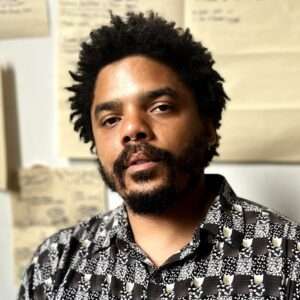
fields harrington is a Brooklyn-based artist whose practice spans sculpture, photography, and writing. Through his work, he examines how tools, technologies, and infrastructures—often assumed to be neutral—are shaped by underlying ideologies of race, value, and power. By repurposing industrial products and scientific instruments, harrington explores how these objects carry embedded histories, revealing the ways they structure knowledge, labor, and social relations.
harrington holds a BFA from the University of North Texas and an MFA from the University of Pennsylvania. He studied at San Antonio Community College and participated in the Whitney Independent Study Program. His work has been presented in solo exhibitions at David Salkin Gallery, KAJE, Petrine, and Y2K Group and included in group exhibitions at MIT List Visual Arts Center, Galerie Thomas Schulte, Parsons School of Design, 52-07 Flushing Avenue, and Automat Gallery. He was an L.A.B. researcher-in-residence at The Kitchen in collaboration with The School for Poetic Computation and took part in the research residency Site to be Seen at RAIR.
About the Guest Curator:
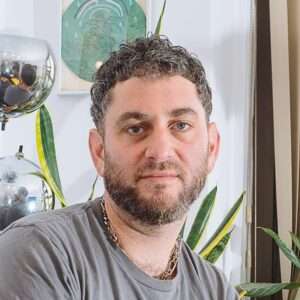
Jesse Bandler Firestone has held curatorial positions at a diverse range of institutions, including The Shed, Montclair State University, Wave Hill Public Garden and Cultural Center, and Satellite Art Show, as well as various artist-run spaces and nonprofits. His research spans conceptual art, emerging trends, institutional critique, and exhibition-making as a form of social practice. He is committed to broadening artist rosters by incorporating intergenerational perspectives and amplifying diverse, often underrepresented voices. This includes artists who identify as LGBTQ+, BIPOC, as well as individuals with disabilities. He has been an advisor for Biennials, private collections, and corporate art programs, produced over 70 commissions, ranging from installations to opera, and lectured at institutions such as Harvard and Pratt. His writing has appeared in numerous catalogs and publications, including Sculpture Magazine, The Brooklyn Rail, and Slate. He holds degrees from Washington University in St. Louis and the School of Visual Arts.
The 2025 NYC-Based Artist Residency Program is made possible by the New York State Council on the Arts with the support of the Office of the Governor and the New York State Legislature. This program is supported, in part, by public funds from the New York City Department of Cultural Affairs in partnership with the City Council.

![]()
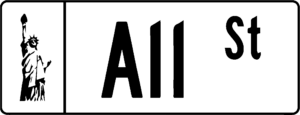
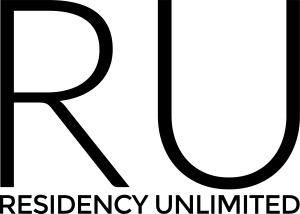
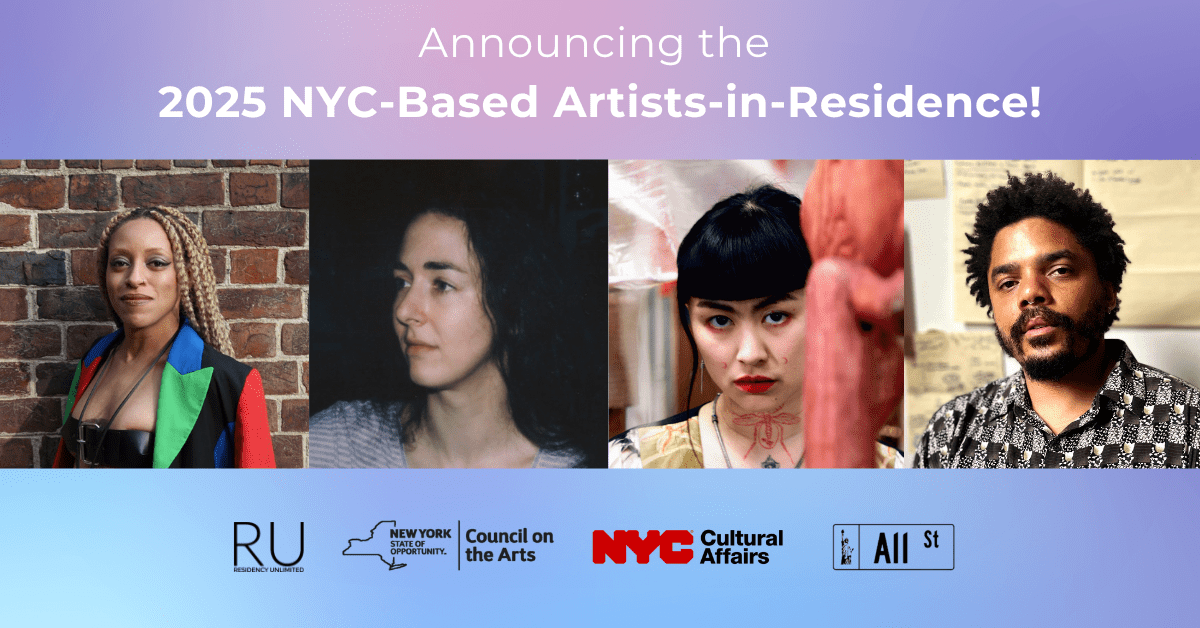
![Web banner_[In]Convenient [Short]Cuts Webpage Web banner_[In]Convenient [Short]Cuts Webpage](https://residencyunlimited.org/wp-content/uploads/elementor/thumbs/Web-banner_InConvenient-ShortCuts-Webpage-scaled-rchjxxumqm1j54m1p5kwvxgemcda3rok2m7r5oqfck.png)
